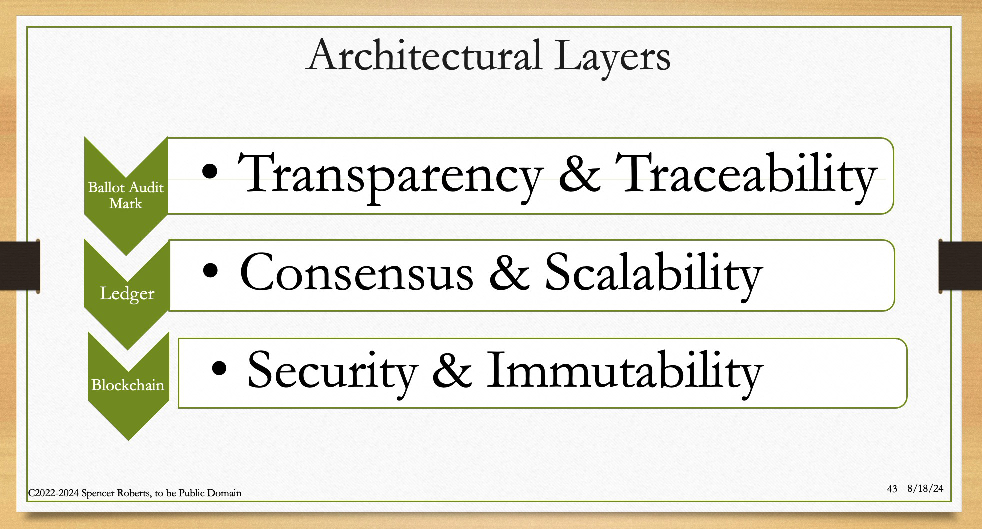EIP electronic implementations are built upon a layered architecture, adding system characteristics as we move down the layer stack. There are three architectural layers, the last two of which are optional :
* Auditing (Ballot Audit Marks/Vote Tracking Numbers/Tokens)
* Distributed Ledgers (optional)
* Blockchain (optional)

Auditing with Ballot Audit Marks (BAMs / Tokens)
BAMs provide transparency by providing voters the ability to trace their ballot from the point of inception all the way through to reporting election results. This creates an audit trail. At no time is the vote altered - and even if it were to be, everyone can always verify it on the ledger to ensure that it was not. Verification takes two forms: one by the voter themselves when they validate their vote contents and another when all ledger observers acknowledge this verification through observation by consensus.
The idea here is not to prevent unauthorized data alteration, but rather to detect it if it occurs. Once detected, any errant votes can be remedied, even though the likelihood of this occurring is extremely small.
The entire point here is to operate elections in a transparent manner by making every vote auditable because you can't claim to have free and fair elections without providing the ability for each voter to verify their cast vote and the ability to count all the votes themselves. When it comes to election processes, there is no transparency higher than this. That’s why BAMs are a required capability of the protocol - you can’t implement any form of EIP without it.
Distributed Ledgers
A Distributed Ledger allows multiple organizations and people (in addition to the voter) the ability to participate in the tally process when each of them are able to physically count all the votes, all at the same time. Since everybody’s tokens are placed in a single ledger accessible to the world, anybody and everybody can count all the votes without having to trust that somebody else will get it correct.
There is no valid reason any tallying participant should get a different value than any other participant. Nevertheless, it’s comforting that more than one party is performing this task in a non-clandestine manner. That’s a breath of fresh air given how nearly all electronic voting systems work today.
Distributed ledger’s enable scalability by hosting all of the election results on multiple servers across the distributed ledger network. This provides several benefits automatically, including some element of fault tolerance as well as security by widening the attack surface (it’s harder to take down multiple network nodes than a single one).
While distributed ledgers are optional, it’s hard to scale a large, geographically dispersed election without them. The alternative is to use a large centralized server, possibly replicated. Either one will work, which is why distributed ledgers are optional.
Blockchain
While not required, Blockchain technology can add some nice features with respect to security and immutability. When election data is stored in a Blockchain data structure, it becomes tamper resistant because any attempt to change any of the shared data is automatically detected.